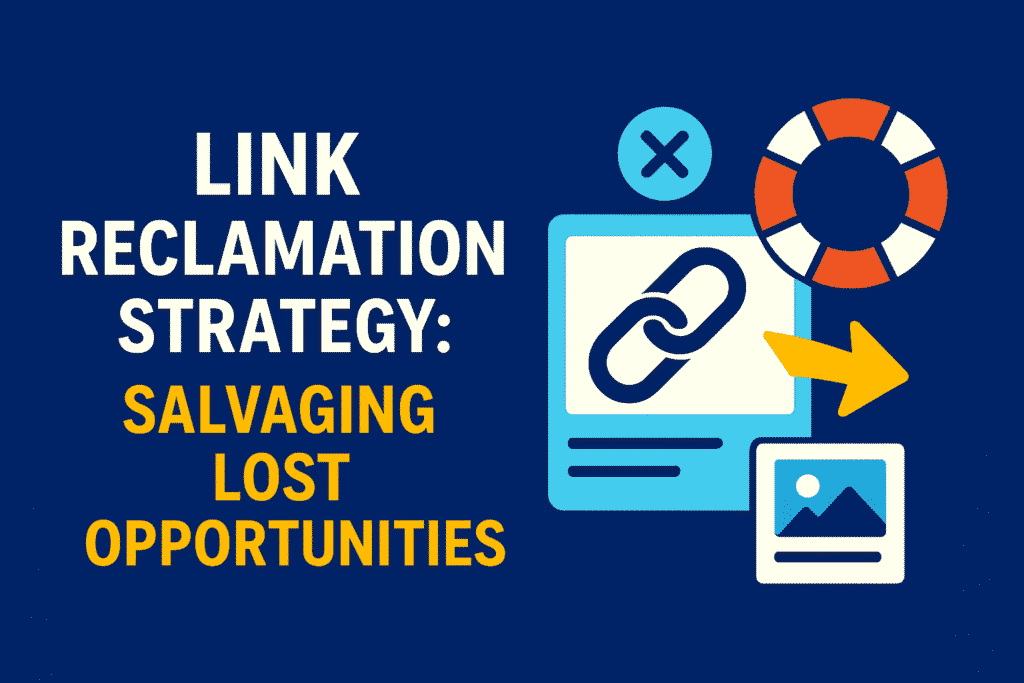
Contents
Imagine pouring resources into building valuable backlinks for years, only to watch them vanish—taking your traffic and rankings with them. Research by Moz shows 66% of all links decay or die within 9 years, while 7–20% disappear within months. This silent erosion of your link profile isn’t just frustrating; it’s a costly drain on your SEO equity.
Link reclamation—the proactive process of recovering lost backlinks and transforming unlinked brand mentions into active links—is your antidote. It’s 3x more efficient than new link building, restores authority, recovers referral traffic, and costs pennies compared to outreach campaigns. Let’s transform your decaying links into renewed growth.
The High Cost of Lost Links: More Than Just Broken URLs
Every vanished link chips away at your site’s foundation. Consider the impacts:
- SEO Damage: Lost links reduce Domain Rating (DR), lower keyword rankings, and waste Google’s crawl budget on dead ends.
- Economic Loss: Losing just 50 links/year = ~$15K wasted (at conservative $300/link acquisition costs).
- User Experience: Broken links frustrate visitors, spike bounce rates, and erode trust.
Case in point: An eCommerce brand saw a 22% drop in organic traffic after a site migration accidentally broke 1,200 product links. The fix? Strategic reclamation.
Why Links Disappear: Diagnosing the Culprits
1. Content Decay & Updates
Sites purge old pages during redesigns. A journalistic site might delete archived news, breaking links from researchers or bloggers.
2. Technical Meltdowns
- 404 errors from deleted pages
- Faulty redirects (e.g., 302 instead of 301)
- Incorrect canonicals or orphaned pages
3. Policy Shifts
Publishers like Forbes or niche blogs may:
- Add
rel="nofollow"after algorithm updates - Purge “external resource” sections
- Delete sponsored content after campaigns
4. Unlinked Mentions
Your brand gets cited in articles, social posts, or forums—but without hyperlinks. These are low-hanging reclamation targets.
Your Step-by-Step Link Reclamation Framework
Phase 1: Discovery – Finding Lost Opportunities
- Tools:
- Ahrefs/SEMrush: Run “Lost Backlinks” reports (filter by DR 40+).
- Google Search Console: Export all 404 errors under “Coverage.”
- BuzzSumo/Mention: Track brand mentions without links.
- Audit Cadence: Quarterly checks + monthly 404 scans.
Phase 2: Prioritization – Targeting High-Value Links
Rank targets by:
- Domain Authority (DR/AHREFS > 40)
- Traffic Potential (SEMrush Traffic Analytics)
- Commercial Relevance (e.g., links pointing to product pages > blog posts)
- Link Quality (Dofollow, contextual, topically aligned)
Pro Tip: Use Google Analytics to see if broken links once sent referral traffic.
Phase 3: Reclamation – Tactical Recovery Playbook
Broken Link Outreach Template:
Subject: Quick fix for your broken link to [Your Brand]
Hi [Name],
I noticed your excellent article on Topic includes a link to our [Old Resource]. That page has moved to:
[New URL]
Since your readers might hit a 404, could you update the link? As a thank-you, I’ve linked to this piece from our [Resource] at [Your URL].
Best,
[Your Name]
Unlinked Mention Strategy:
“Loved your mention of [Brand] in your [Article]! If you’re citing us, adding a link to [Relevant Page] would help readers dive deeper. Happy to share this with our 50K followers too!”
Content Revival: If a linked page is gone, offer an updated version (e.g., “Our 2024 Guide to X”).
Phase 4: Maintenance – Safeguarding Your Links
- Redirect all 404s to relevant pages (Screaming Frog > Bulk Export > 301 Redirects).
- Set Ahrefs/SEMrush alerts for new lost links.
- Use ChangeTower for brand mention tracking.
Advanced Reclamation Tactics
- Image Link Recovery: Find uncredited uses of your visuals via TinEye/Google Reverse Image Search. Outreach: “Love that you used our [Infographic]! Could you link to the source here: [URL]?”
- Redirect Chain Audits: Use Sitebulb to ensure 301s pass >90% equity (no 5+ hop chains).
- Broken Link Building Synergy: Find resource pages linking to dead content. Offer your link as a replacement.
Real-World Wins
- SaaS Brand: Recovered 93 lost links by fixing 404s. Result: 11 keywords regained top-3 rankings.
- eCommerce Retailer: Redirected broken product links + outreach. Outcome: 15K monthly visits restored.
Integrating Reclamation into Your SEO Workflow
- Prevention:
- Preserve URLs during migrations (www.site.com/blog/post → www.site.com/resources/post).
- Auto-redirect deleted pages to parent categories.
- Team Coordination:
- Devs: Audit links pre-launch.
- Content Team: Update old posts with new links.
- SEO: Quarterly backlink health reports.
- ROI Focus: Prioritize links from pages with 1K+ monthly visitors (via GA4).
Essential Tools Breakdown
| Tool | Best For | Cost | Alternative |
|---|---|---|---|
| Ahrefs | Lost backlinks, DR checks | $$$ | SEMrush, Moz |
| Screaming Frog | 404 identification | Free (500 URLs) | Sitebulb |
| Hunter.io | Finding webmaster emails | Freemium | VoilaNorbert |
| Google Alerts | Unlinked mentions | Free | Mention (Paid) |
Future-Proofing Your Strategy
- Automation: Use Zapier to pipe new 404s into Asana/Trello.
- AI Monitoring: Tools like LRT use ML to predict link decay risks.
- Link Equity Preservation: In migrations, map all old URLs to new ones (even low-traffic pages).
Conclusion: Your Lost Links Are Recoverable Assets
Link reclamation isn’t SEO janitorial work—it’s strategic asset recovery. By investing just 1–2 hours weekly, you can:
- Recover 20–40% of lost organic traffic
- Restore keyword rankings faster than new content
- Build relationships with influential publishers
Your Action Plan:
- Run an Ahrefs “Lost Backlinks” report today.
- Fix technical 404s via redirects.
- Outreach to 5 high-value broken link prospects this week.
“In digital marketing, the past is never dead—it’s an underutilized resource waiting for revival.”
Supercharge Your SEO with Our Expert Link Building Services! Get Started Now
